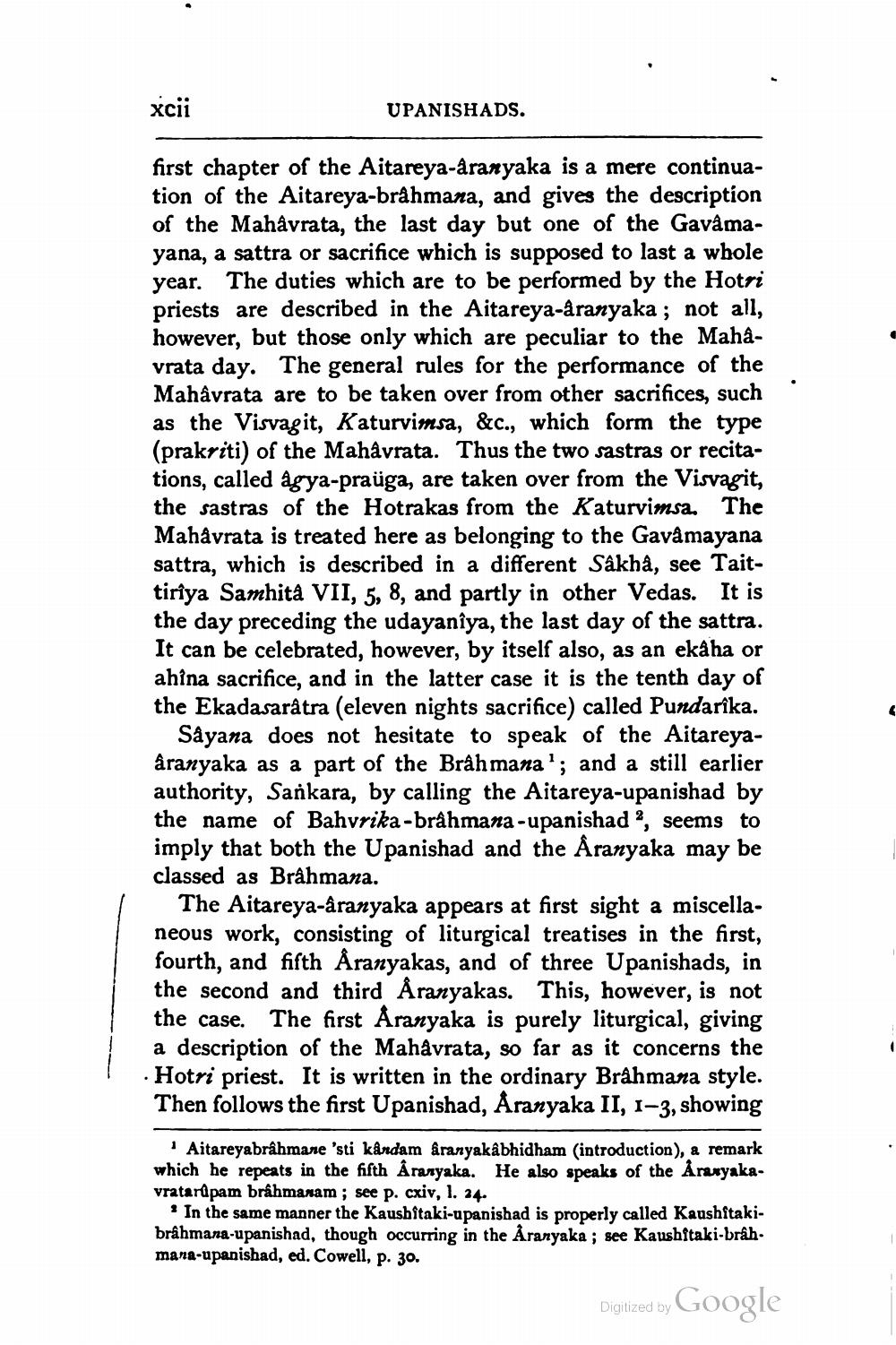________________
xcii
UPANISHADS.
first chapter of the Aitareya-aranyaka is a mere continuation of the Aitareya-brahmana, and gives the description of the Mahâvrata, the last day but one of the Gavâmayana, a sattra or sacrifice which is supposed to last a whole year. The duties which are to be performed by the Hotri priests are described in the Aitareya-aranyaka; not all, however, but those only which are peculiar to the Mahavrata day. The general rules for the performance of the Mahâvrata are to be taken over from other sacrifices, such as the Visvagit, Katurvimsa, &c., which form the type (prakriti) of the Mahâvrata. Thus the two sastras or recitations, called agya-praüga, are taken over from the Visvagit, the sastras of the Hotrakas from the Katurvimsa. The Mahåvrata is treated here as belonging to the Gavamayana sattra, which is described in a different Sâkha, see Taittiriya Samhita VII, 5, 8, and partly in other Vedas. It is the day preceding the udayanîya, the last day of the sattra. It can be celebrated, however, by itself also, as an ekâha or ahîna sacrifice, and in the latter case it is the tenth day of the Ekadasarâtra (eleven nights sacrifice) called Pundarîka.
Såyana does not hesitate to speak of the Aitareyaaranyaka as a part of the Brahmana'; and a still earlier authority, Sankara, by calling the Aitareya-upanishad by the name of Bahvrika-brâhmana-upanishad ?, seems to imply that both the Upanishad and the Åranyaka may be classed as Brahmana.
The Aitareya-aranyaka appears at first sight a miscellaneous work, consisting of liturgical treatises in the first, fourth, and fifth Åranyakas, and of three Upanishads, in the second and third Åranyakas. This, however, is not the case. The first Aranyaka is purely liturgical, giving a description of the Mahávrata, so far as it concerns the · Hotri priest. It is written in the ordinary Brahmana style. Then follows the first Upanishad, Aranyaka II, 1-3, showing
Aitareyabrâhmane 'sti kändam &ranyakâbhidham introduction), a remark which he repeats in the fifth Aranyaka. He also speaks of the Araxyakavratarupam brahmanam ; see p. cxiv, I. 24.
* In the same manner the Kaushitaki-upanishad is properly called Kaushitakibrahmana-upanishad, though occurring in the Aranyaka; see Kaushitaki-brâh. mana-upanishad, ed. Cowell, p. 30.
Digitized by Google




